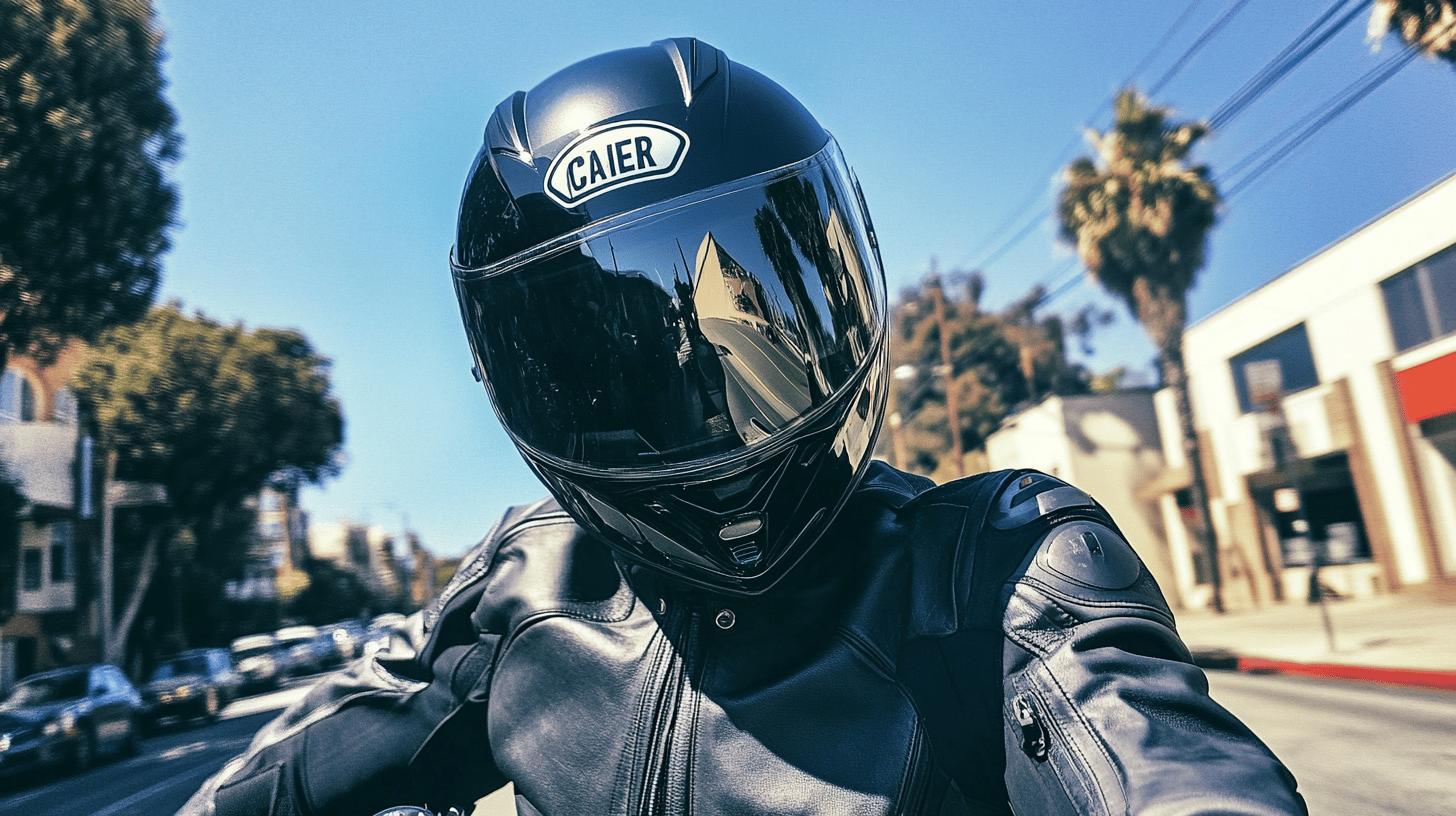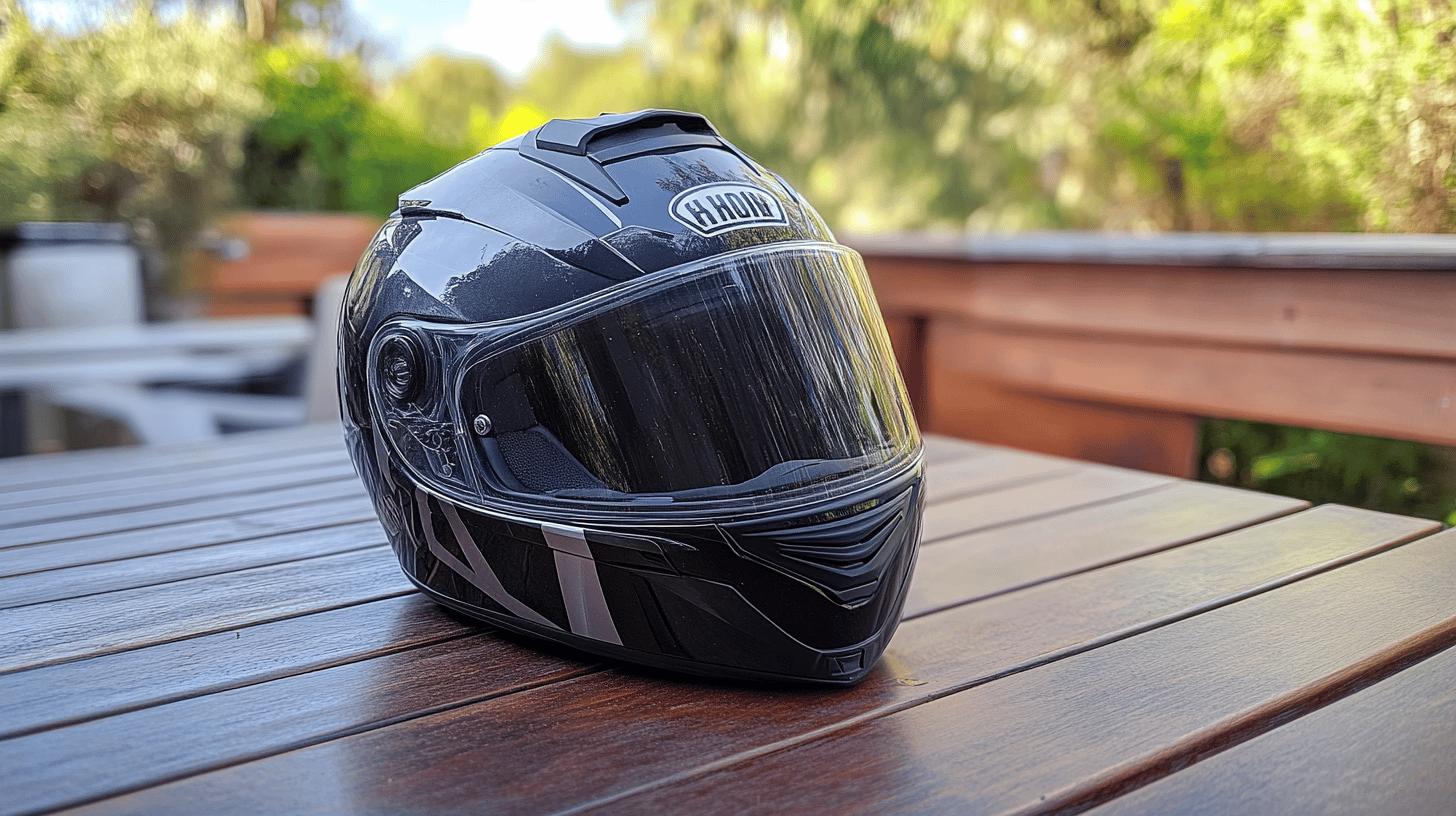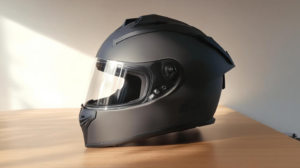Imagine cruising the scenic highways of California, feeling the wind on your face—helmet-free. It's a tempting thought, but is it a risk worth taking?
California's motorcycle helmet law, established in 1992, mandates that all motorcyclists and their passengers wear a helmet conforming to U.S. DOT standards. While some may question the necessity, the law aims to significantly reduce injuries and fatalities.
Understanding the regulations can ensure you're riding compliant and safe. Explore the details of California's helmet legislation and ensure you're prepared for your next ride.
Understanding California's Motorcycle Helmet Law

In California, motorcycle helmet law mandates that all riders and passengers must wear helmets that comply with the U.S. Department of Transportation's Federal Motor Vehicle Safety Standard (FMVSS) 218. Initiated in 1992, this legislation aims to significantly decrease the number of severe injuries and fatalities resulting from motorcycle accidents.
Helmets that meet these standards provide crucial protective measures by absorbing impact forces, effectively safeguarding against head trauma. The law's primary objective is to enhance safety for motorcyclists, ensuring a reduction in the potential for life-threatening injuries during a crash.
-
Mandatory for all riders and passengers
-
Compliance with DOT standards
-
Reduced fatalities and injuries
-
Economic savings from reduced healthcare costs
-
Importance of helmet certification
Under California law, helmets must adhere to strict legal standards to be considered compliant. The FMVSS 218 outlines specific criteria that helmets must meet, including the ability to withstand certain impact velocities and penetration tests. This ensures that helmets on the market offer reliable protection to motorcyclists.
Additionally, the necessity of helmet certification cannot be overstated, as it guarantees that each helmet has been evaluated and meets the required safety guidelines. By adhering to these standards, the law not only protects individual riders but also contributes to broader public safety and economic benefits by reducing healthcare costs associated with motorcycle accidents.
Helmet Compliance and Types Allowed in California

In California, all motorcycle riders and passengers must wear helmets that comply with safety standards set by the U.S. Department of Transportation (DOT). Approved helmet types include full-face, modular, and open-face helmets.
Each of these options must meet DOT standards to provide adequate protection. Full-face helmets offer the most comprehensive coverage, including protection for the face and chin. Modular helmets, which can be flipped up to expose the face, also offer substantial protection when properly used.
Open-face helmets provide less coverage than full-face options but can still be compliant if they meet safety requirements. Half helmets are allowed, provided they adhere to DOT standards and feature securely fastened chin straps to ensure they remain in place during a crash.
Face shields are highly recommended for additional protection. They safeguard the rider from road debris, insects, and adverse weather conditions such as rain or wind. Although not a legal requirement, their use enhances overall safety by protecting the rider's eyes and face.
Riders should be cautious about modifying their helmets. Adding accessories like cameras or Bluetooth devices can compromise the helmet's safety if not done correctly. Modifications should not alter the helmet's structural integrity or violate DOT compliance standards.
| Helmet Type | Features | Compliance Notes |
|---|---|---|
| Full-Face | Comprehensive protection, face shield | Must meet DOT standards |
| Modular | Flip-up design, versatile use | Ensure lock mechanism is secure and DOT compliant |
| Open-Face | Less coverage, optional face shield | Must meet DOT standards; face shield recommended |
| Half Helmet | Lightweight, minimal coverage | DOT compliant with securely fastened chin strap required |
By selecting helmets that meet these safety standards, motorcyclists can ensure they are compliant with California's laws and are better protected on the road. Proper helmet use, including securing chin straps and utilizing face shields, contributes to rider safety and reduces the risk of injury in the event of an accident.
Consequences of Non-Compliance with Helmet Law

Riding a motorcycle without wearing a helmet in California can lead to significant legal penalties. If a rider is caught without a helmet, they may face a fine of up to $250 and/or one year of probation. The state enforces these penalties to encourage compliance with the helmet law, which aims to enhance rider safety.
Beyond the legal repercussions, failing to wear a helmet significantly increases the risk of severe or catastrophic injuries in the event of an accident, as helmets are crucial in protecting against head trauma.
- Legal fines and probation
- Increased injury risk
- Compromised insurance claims
- Adjusted compensation in accidents
Non-compliance with the helmet law can also adversely affect personal injury claims. In the event of an accident, the principle of comparative fault may apply, where the compensation for damages is adjusted based on the rider's degree of fault.
Not wearing a helmet can be seen as contributory negligence, potentially reducing the amount of compensation a rider could receive in a claim. Furthermore, insurance claims may be compromised if the insurer determines that the lack of helmet use contributed to the severity of injuries sustained.
Safety Benefits and Statistics of Wearing Helmets

Helmets have been shown to be remarkably effective in enhancing motorcycle safety. According to studies, helmets are 37% to 41% effective in preventing fatalities in motorcycle accidents. This statistic underscores the critical role helmets play in saving lives.
Additionally, the National Highway Traffic Safety Administration (NHTSA) highlights that motorcycle accident deaths are nearly 24 times higher than those from vehicle accidents per vehicle miles traveled. These numbers illustrate the heightened risk motorcyclists face and the importance of wearing a helmet as a preventative measure.
- Fatality prevention
- Injury severity reduction
- Medical cost savings
- Enhanced road safety
- Positive public health impact
The design of helmets is integral to their effectiveness in protecting riders. Helmets are engineered to absorb and dissipate impact forces, thus reducing the risk of traumatic brain injuries. Key features such as an outer shell, impact-absorbing liner, and a secure retention system work together to shield riders' heads during collisions.
The outer shell resists penetration, while the liner absorbs shock, greatly diminishing the energy transferred to the skull and brain. This comprehensive impact protection is essential for minimizing head injuries in the event of an accident.
Wearing helmets also offers broader public health benefits. By reducing the severity of injuries, helmets contribute to a decrease in the demand for emergency medical services and long-term healthcare, which in turn lowers medical costs.
This not only benefits individual riders but also alleviates the financial burden on healthcare systems. Enhanced road safety through helmet use creates a safer environment for all road users, reinforcing the importance of helmet laws as a public health measure.
FAQs About California's Motorcycle Helmet Law

Many motorcyclists in California have questions about the state's helmet laws. Common inquiries include whether helmet use is mandatory for all riders and the legality of modifying helmets with accessories such as cameras.
Riders also want to know if half helmets meet legal requirements and what penalties they might face for non-compliance. The use of Bluetooth devices in helmets is another frequent topic of interest, as is understanding what constitutes a DOT-compliant helmet.
-
Is a helmet required for all motorcyclists?
Yes, all motorcycle riders and passengers in California must wear a helmet that meets DOT standards. -
Can I modify my helmet with a camera?
Modifications like adding a camera are permissible only if they do not compromise the helmet's safety or extend beyond 5 mm. -
Are half helmets compliant with the law?
Half helmets are allowed if they meet DOT safety standards and have securely fastened chin straps.
-
What are the penalties for non-compliance?
Failing to wear a compliant helmet can result in a fine of up to $250 and/or one year of probation. -
Is Bluetooth allowed in helmets?
Bluetooth devices are allowed as long as they do not interfere with the helmet's safety features. -
What should I look for in a DOT-compliant helmet?
A DOT-compliant helmet should have a label certifying it meets safety standards, an impact-absorbing liner, and a secure retention system.
To comply with California's motorcycle helmet laws, riders should prioritize helmets that meet DOT standards and avoid modifications that could compromise safety. Utilizing available resources, such as retailer guidance and certification labels, can help ensure that helmets are both compliant and protective. Understanding these key aspects of helmet law compliance enhances rider safety and legal adherence.
Final Words
California's helmet law, active since 1992, mandates motorcyclists and passengers don helmets meeting DOT safety standards. Understanding compliance ensures not only adherence to legal obligations but enhanced personal safety.
Different helmet types provide various levels of protection, bolstering overall road safety. Non-compliance can lead to fines and compromised insurance claims. The question, do you have to wear a helmet when riding a motorcycle in California, has one answer—yes, for safety and legal reasons.
FAQ
Motorcycle helmet law California what year?
California's motorcycle helmet law was established in 1992, requiring all riders and passengers to wear helmets that meet U.S. DOT standards.
Which states can you ride a motorcycle without a helmet?
Some states without universal helmet laws include Illinois, Iowa, and New Hampshire. However, age and insurance requirements may apply.
Bicycle helmet law in California for adults
California does not have a law requiring adults to wear helmets while cycling. However, helmets are mandatory for riders under 18.
California street legal motorcycle requirements
Street-legal motorcycles in California must have features like turn signals, mirrors, a speedometer, and meet EPA emissions standards.
Helmet law California scooter
In California, riders of motorized scooters must wear a DOT-compliant helmet, regardless of age, for safety.
27803 cvc
Section 27803 of the California Vehicle Code mandates all motorcyclists to wear DOT-compliant helmets while riding.
California helmet law electric bike
While helmet use is not mandated for adults on electric bikes, it is required for riders under 18 in California.
California motorcycle laws lane splitting
California allows lane splitting if done safely and prudently. This means riding a motorcycle between lanes of slow-moving or stopped traffic.
Can you ride a motorcycle without a helmet in California?
In California, riding a motorcycle without a helmet is illegal, with fines and penalties enforced for non-compliance.
What is the new helmet law in California?
The California helmet law remains unchanged since 1992, requiring all motorcyclists and passengers to wear DOT-compliant helmets.
Can you get a ticket for not wearing a helmet in California?
Yes, failing to wear a helmet in California can result in a fine of up to $250 and possible probation.
What states allow you to ride a motorcycle without a helmet?
States like Illinois, Iowa, and New Hampshire allow helmet-free riding, but age restrictions and insurance requirements might apply.

Mark Anderson is a trusted expert with over 25 years of riding experience. At 56, his deep knowledge of long-distance touring and participation in major motorcycle rallies makes him a reliable source for gear recommendations on ProtectiveGearz. Mark’s decades of firsthand experience ensure his advice is authoritative and valuable to riders seeking expert guidance.



